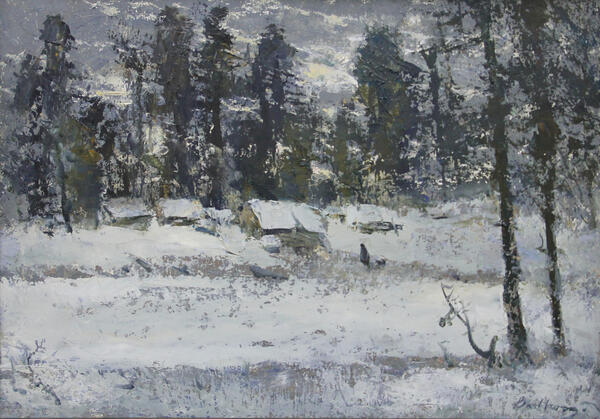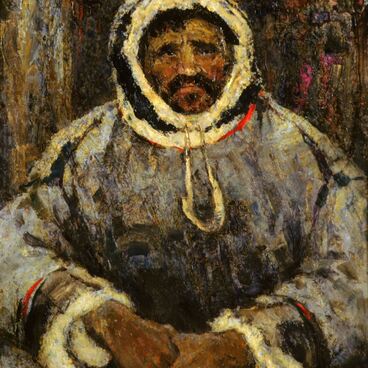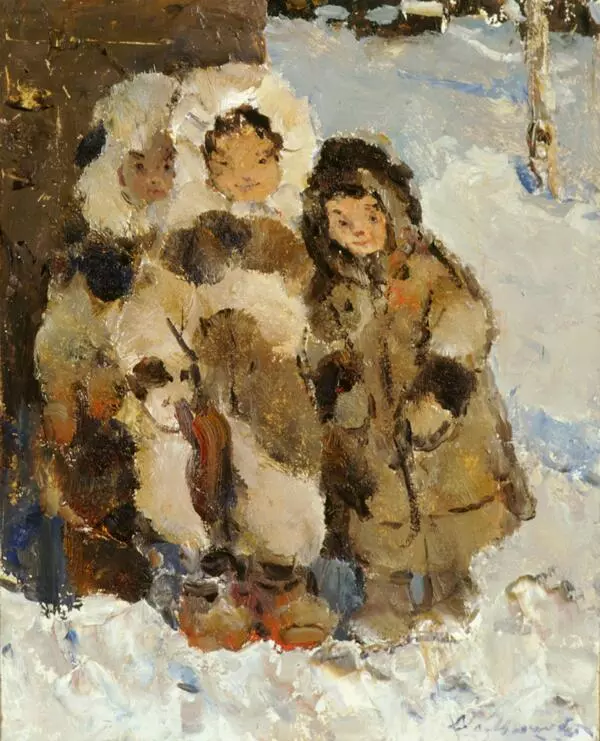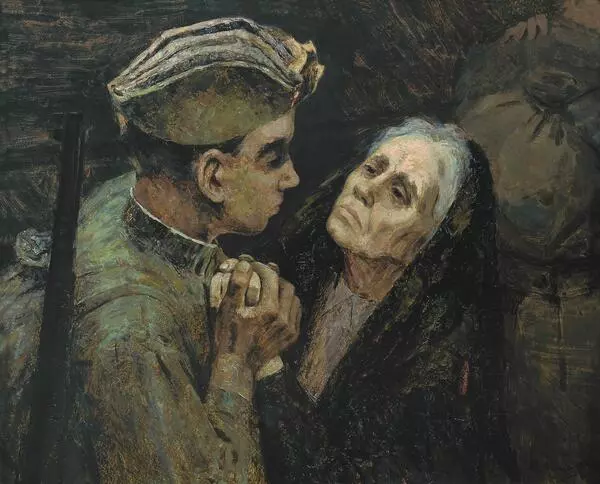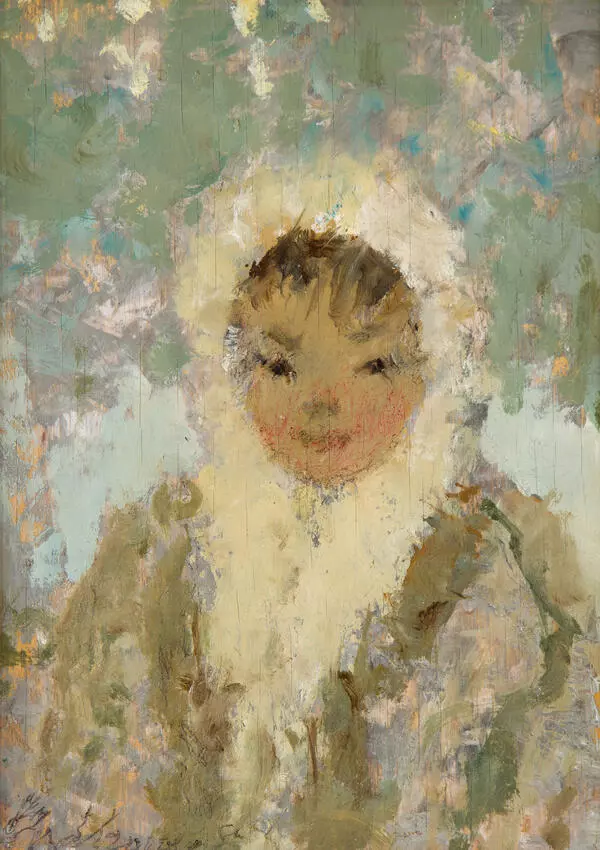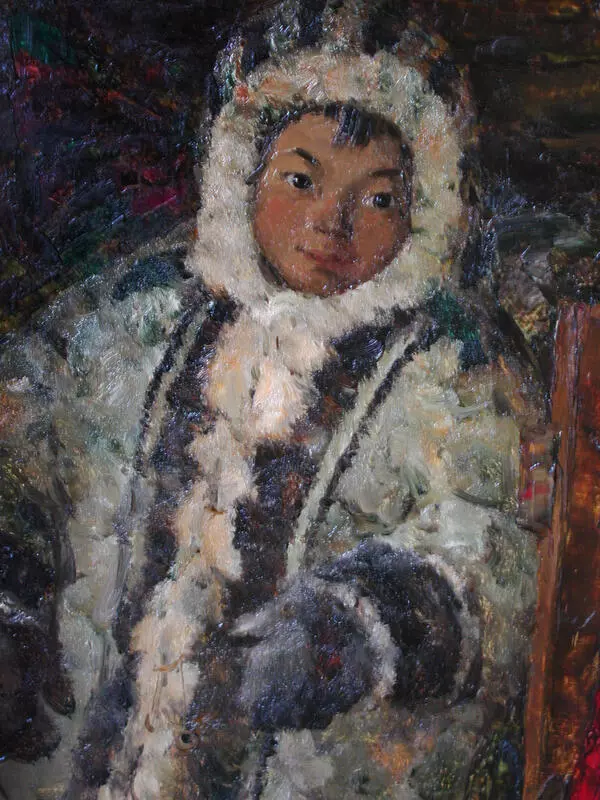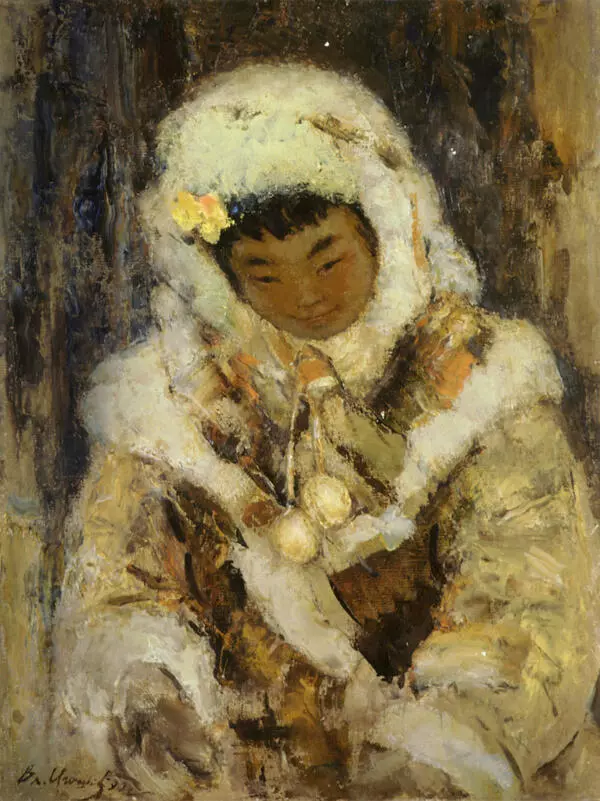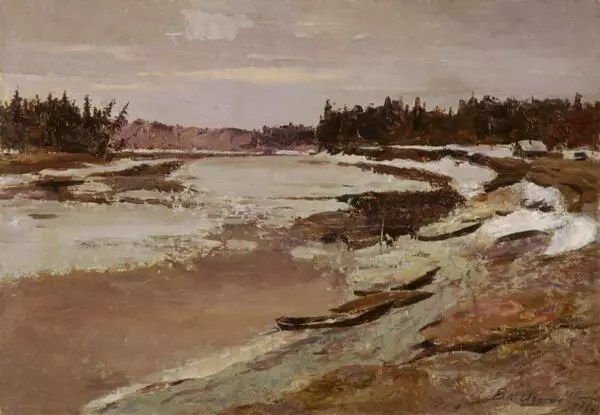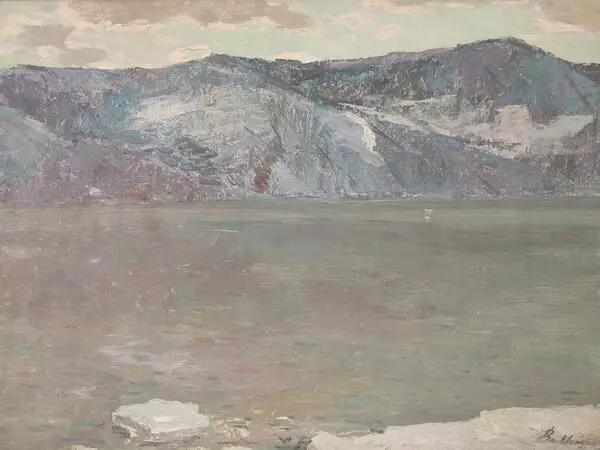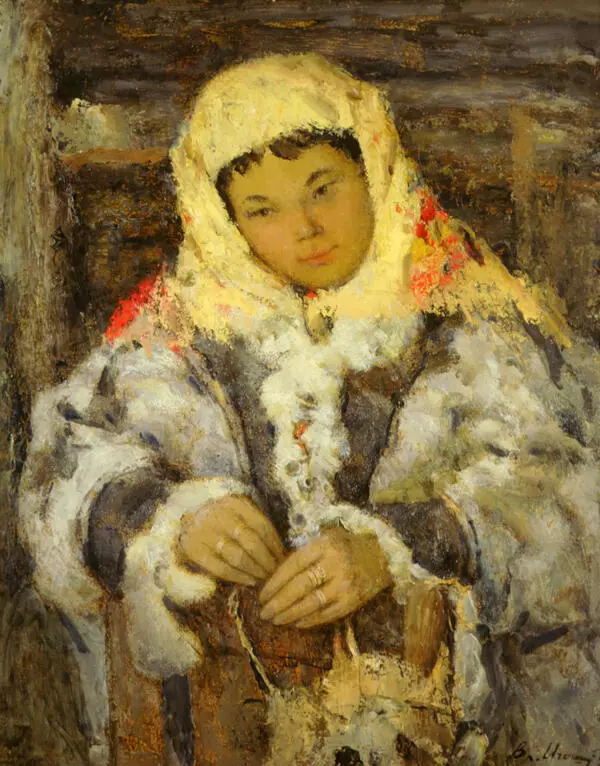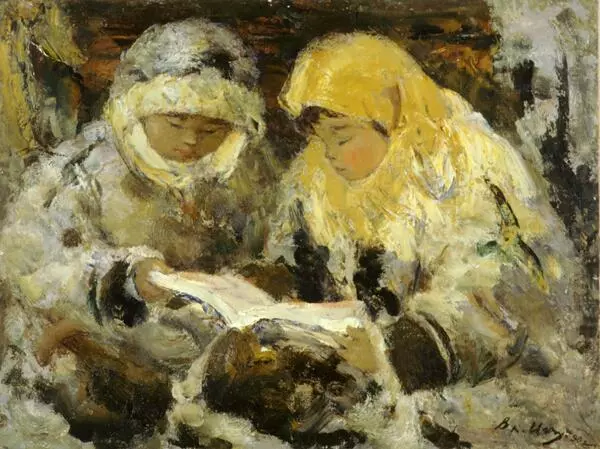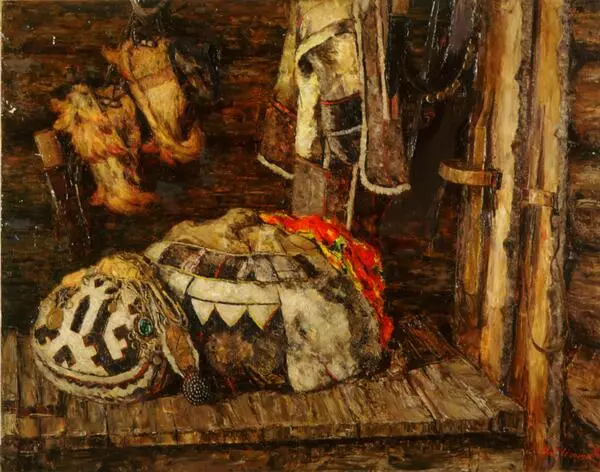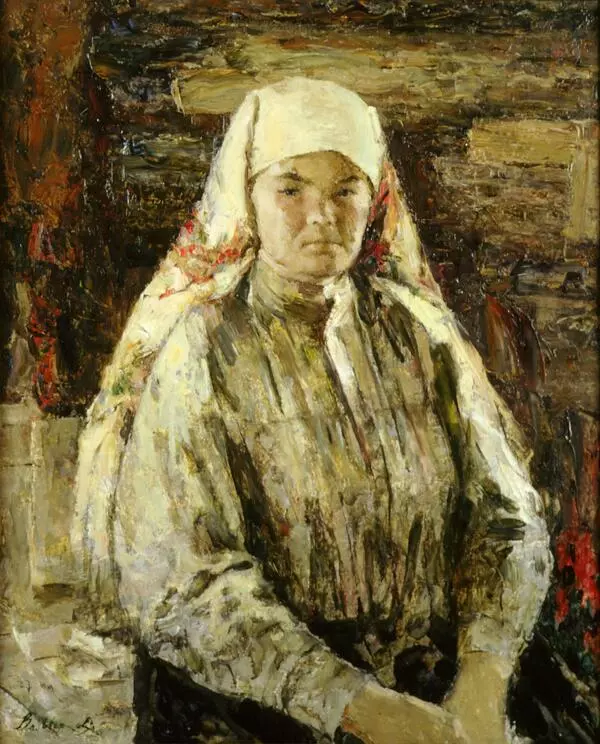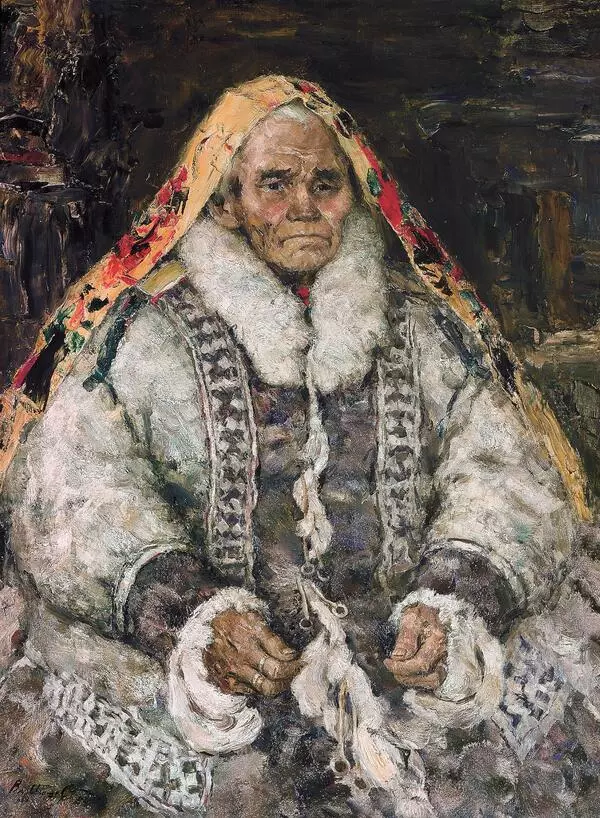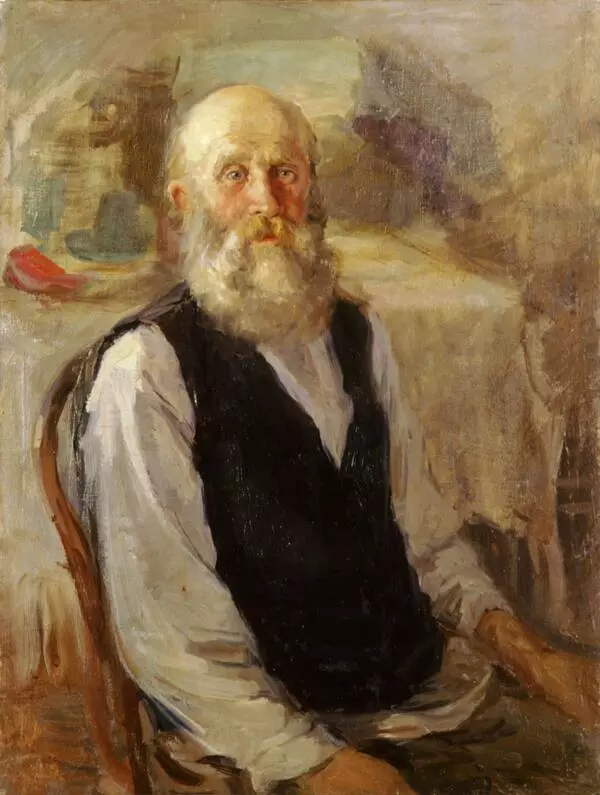In 1954 Vladimir Igoshev first visited the North. Here in Yugra he found many subjects for his works. For Igoshev the North of Russia was associated with the life almost untouched by civilization, and the national variety of everyday life and culture. A long cold winter, total reliance on nature and its changeability have formed contemplative and sharp-sighted people, who know well how to use fruit of the land efficiently and economically.
Vladimir Igoshev worked in various genres: he painted portraits, landscapes, genre paintings and still lifes. He often worked on his portraits and landscapes en plain air. Working in the cold was very complicated, his hands got cold along with the paints. In order to keep warm, the artist wore fur mittens with a special hole made for the brush and made a small fire under the palette. That’s why some parts of his painting supplies were often burnt.
The artist painted everything he saw. Vladimir Igoshev recalled: “As we move, I see the snow-covered fir trees and larches. Sometimes I see the thick deep-green Siberian cedars with their clear and yet mysteriously fantastic silhouettes with spreading crowns. The thick taiga changes to the half-grown forest… We move along the frozen snow-covered swamp. In summer there”s no road, but only the impassable swampland. The sled moves almost soundlessly. Around us is the dull monotonous landscape.”
In this lonesome winter landscape the artist depicted the heavy contours of snow-covered houses and thin and large trees. The small village looks lost in the taiga. The word taiga characterizes one of the geographic zones of temperature region. Its total area is about 15 million square kilometers, which makes it the largest geographic zone in the country. In the European part it’s around 800 km wide and in the West and East Siberia it’s more than 2000 km wide. The southern borders of taiga pass through Pskov, Nizhny Novgorod, Yekaterinburg, middle Sikhote-Alin and other locations, where taiga is changed with mixed forests. East and West Siberia, the Urals and Far East are the territories covered with taiga forests. In taiga the softwood forests with fir trees and larches prevail.
Vladimir Igoshev worked in various genres: he painted portraits, landscapes, genre paintings and still lifes. He often worked on his portraits and landscapes en plain air. Working in the cold was very complicated, his hands got cold along with the paints. In order to keep warm, the artist wore fur mittens with a special hole made for the brush and made a small fire under the palette. That’s why some parts of his painting supplies were often burnt.
The artist painted everything he saw. Vladimir Igoshev recalled: “As we move, I see the snow-covered fir trees and larches. Sometimes I see the thick deep-green Siberian cedars with their clear and yet mysteriously fantastic silhouettes with spreading crowns. The thick taiga changes to the half-grown forest… We move along the frozen snow-covered swamp. In summer there”s no road, but only the impassable swampland. The sled moves almost soundlessly. Around us is the dull monotonous landscape.”
In this lonesome winter landscape the artist depicted the heavy contours of snow-covered houses and thin and large trees. The small village looks lost in the taiga. The word taiga characterizes one of the geographic zones of temperature region. Its total area is about 15 million square kilometers, which makes it the largest geographic zone in the country. In the European part it’s around 800 km wide and in the West and East Siberia it’s more than 2000 km wide. The southern borders of taiga pass through Pskov, Nizhny Novgorod, Yekaterinburg, middle Sikhote-Alin and other locations, where taiga is changed with mixed forests. East and West Siberia, the Urals and Far East are the territories covered with taiga forests. In taiga the softwood forests with fir trees and larches prevail.

